Here is a review, which relates to HP Omen Desktop, which plays a vital role in high-end desktops to gaming laptops, monitors and even peripherals.
HP have significantly expanded their Omen gaming lineup to include everything from high-end desktops to gaming laptops, monitors and even peripherals. The Omen X is one of the more striking pre-built systems on the market with its cube design and red highlights, though naturally this desktop is mostly intended for high-end buyers that demand powerful graphics, plenty of expansion opportunities and a beefy liquid cooling system.
HP’s more modest gaming desktop is the simply named Omen Desktop, which is now available with AMD Ryzen processors inside. It’s a more traditional tower-style chassis that’s highly configurable, with prices ranging from just under $1,000 to over $3,200. The idea here is that HP can provide gamers of many budgets with a pre-built system that will satisfy your needs.
Here’s a quick look at what HP provides in the Omen Desktop at both the entry level and high end price points, as well as the system I was provided to review.
| Entry-Level | Reviewed | High-End | |
| Processor | AMD Ryzen 5 1600 | AMD Ryzen 7 1800X | Intel Core i7-7700K |
| Memory | 8GB | 16GB | 16GB |
| Storage | 1TB HDD | 256GB SSD + 2TB HDD | 512GB SSD + 2TB HDD |
| Heatsink | Air Cooling | Liquid Cooling | Liquid Cooling |
| Graphics Card | AMD Radeon RX 580 4GB | Nvidia GeForce GTX 1080 | Nvidia GeForce GTX 1080 SLI |
| Power Supply | 500W 80Plus Bronze | 500W 80Plus Bronze | 750W 80Plus Titanium |
| Optical Drive | None | DVD Writer | DVD Writer |
| Price | $999.99 | $1909.99 | $3218.99 |
As you can see, our review unit slots right in the middle of the available options, with a powerful AMD Ryzen 7 1800X octa-core and GeForce GTX 1080 graphics. The amount of configuration options is huge, with HP offering GPUs from the RX 580 up through the GTX 1080 Ti to various dual-GPU setups. A decent selection of processors from both AMD and Intel are available as well.
The tower chassis used by HP for their Omen Desktop is nothing particularly crazy, instead conforming with most traditional PC design trends. Obviously this system is not small form factor, though it’s not particularly large as far as PC cases go, falling around the typical size for most desktops. In fact there’s several “32L” logos around the case, indicating the volume here might be 32 litres.
Build wise the materials used are fairly average, which isn’t unusual for a pre-built desktop. Most of the interior and the side panels are metal, however the top and front are almost entirely black plastic of different textures and finishes. Those hoping for tempered glass will be disappointed, as the window on the left panel is just standard plastic, and even then it’s an optional feature for some models.
Rather than opting for a boring rectangular chassis, the front section of the Omen Desktop is angular and reasonably interesting. Most of the front panel’s plastic is textured with a carbon-fibre pattern that looks pretty good, even if it’s not real carbon fibre. There’s a large illuminated Omen logo in the center, along with some red lighting that emanates from the large intake vents below. Like most of HP’s Omen line, there’s no RGB to be seen here; the entire design is black with red highlights instead. You’ll even see some subtle red lighting through the case window, which is darkly tinted to give an ominous look.
As far as pre-built chassis go, I like this one from a visual standpoint, even though it uses a fair bit of ‘gamer style’. If the case was on the market for me to purchase for a self-built system, it’s probably not something I’d go for, but I’ve seen far more ugly desktop cases out there. If you buy the Omen Desktop, people will know you have a gaming desktop from looks alone, however it doesn’t go overboard in any aspect.
For cooling, there are plenty of vents around the place, though most are hidden to a degree such that there are no large vent areas like some cases you can buy. There’s a single 120mm fan on the front for intake, which draws air through the v-shaped illuminated vent on the front, as well as a strip of vents along each edge. There are no vents along the top, a small vent on the bottom for the power supply, another small vent on the left side, and a large exhaust vent on the rear. This case has clearly been designed for just two 120mm fans, and that’s what you get pre-installed.
The Omen Desktop has a decent array of front I/O: two USB-A 3.0 ports, two USB-C 3.0 ports, two 3.5mm audio jacks and an SD card reader. The positioning of these ports is a little strange, as they sit on an angled panel that points towards the right. This means that for the ports to be accessible, the system has to sit on your left, but positioning it in this way stops you from being able to look into the Desktop’s window. A small oversight but something I noticed during testing.
On the rear we’re looking at a fairly basic collection of I/O for a gaming desktop. Out of the motherboard we get four USB 3.0 ports, two USB 2.0 ports, three 3.5mm audio jacks, optical audio, Ethernet and some blocked display outputs. On the graphics card there’s three DisplayPorts, a HDMI port and a DVI port. It perhaps wouldn’t have hurt to have a few more audio jacks and USB ports, though this collection should be fine for most users.
The Omen Desktop embraces expansion through toolless design, which is fantastic to see. Along the top front edge are two flaps which can be opened to reveal two 3.5-inch hard drive bays, complete with cool locking mechanisms. All configurations of the Desktop have at least one hard drive installed in the two additional internal bays, which keeps these two bays free for user expansion. Adding more storage space is something many users will want to do, so these highly accessible bays are a neat addition. Oh, and there’s also a slimline optical drive on the front of the desktop, again hidden behind a flap.
Getting to the inside of the Desktop is easy as well thanks to a toolless mechanism that keeps the side panel attached. Press a single button at the top rear of the chassis and the panel comes off, revealing the hardware inside. As I mentioned earlier, configurations can vary significantly between Desktops, however most mid- and upper-tier models come with a closed-loop liquid cooler for the CPU with a 120mm radiator attached to the rear exhaust vent. The GPU, in my case a GTX 1080, is air cooled with a basic dual-fan dual-slot solution. The red highlights to the cooler, GPU shroud and motherboard look pretty neat here.
Expandability is reasonable for an OEM system, though clearly not as good as a custom-built rig. Most of the system’s limitations come from the OEM motherboard, which only has a single PCIe x16 slot, an unused PCIe x4 slot, and four SATA ports which are all occupied: one for the internal HDD, one for the DVD writer, and two for the externally accessible drive bays. There is a free internal 3.5-inch drive bay, but to use it, you’ll have to unplug the optical drive, which is disappointing.
On the other hand there are four DIMM slots, two of which were occupied for my review unit’s 16GB configuration. The SSD is an M.2 PCIe NVMe unit, the motherboard appears to be standard micro-ATX and the power supply seems standard as well. This means basically every component should be user upgradeable in the future, especially the graphics card, storage and RAM, which are all extremely accessible.
However it should be noted that my system was just one of many options available. Those who purchase an Omen Desktop with an Intel CPU will receive an entirely different motherboard, as will those that opt for a dual-GPU setup. My review unit doesn’t have a second PCIe x16 slot for a second graphics card, though HP offers dual-GPU configurations, so it seems several different motherboards are used. Hopefully some of these come with a few more SATA ports.
It's also worth pointing out that cable management wasn’t particularly neat. While the general area around the graphics card and CPU is neat, and the liquid cooling tubes are clearly designed for this specific setup, there are a lot of other cables running around the motherboard and all over the place. For those that like excellent internal aesthetics, things like the multi-colored 24-pin power cables and many loose-hanging cables will disappoint. I suspect most users buying a pre-built desktop won’t care though.
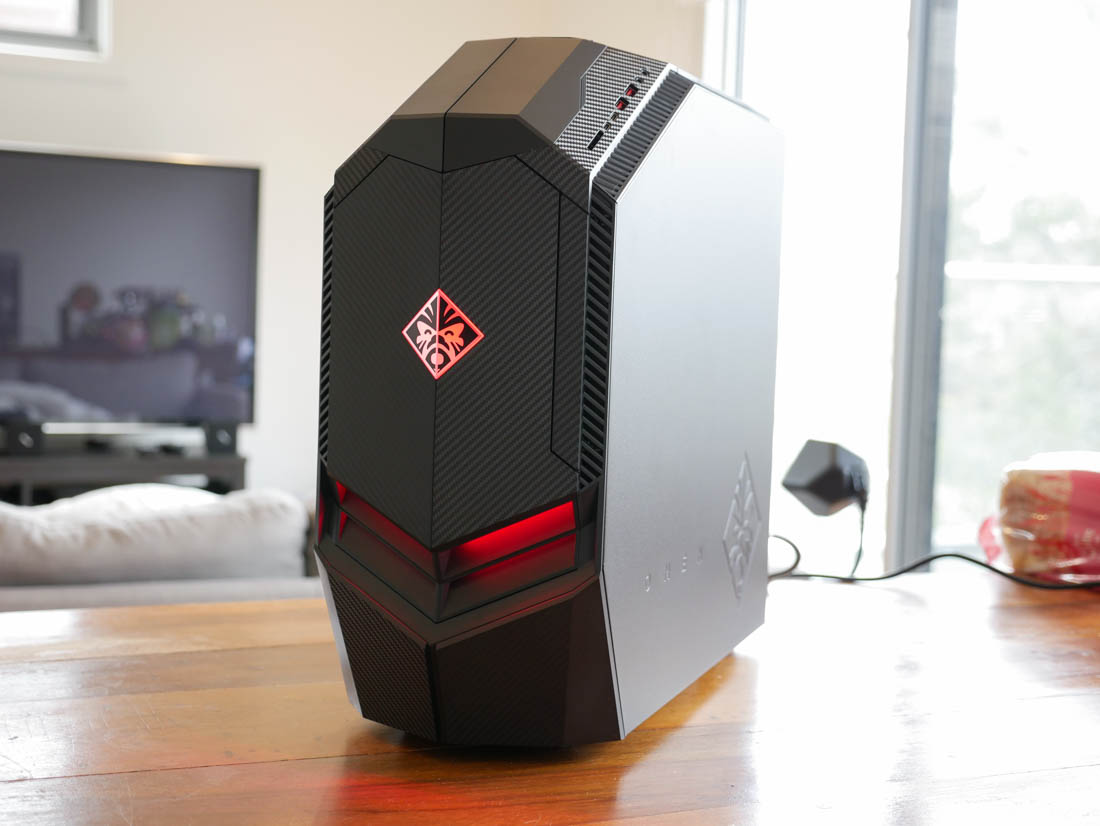
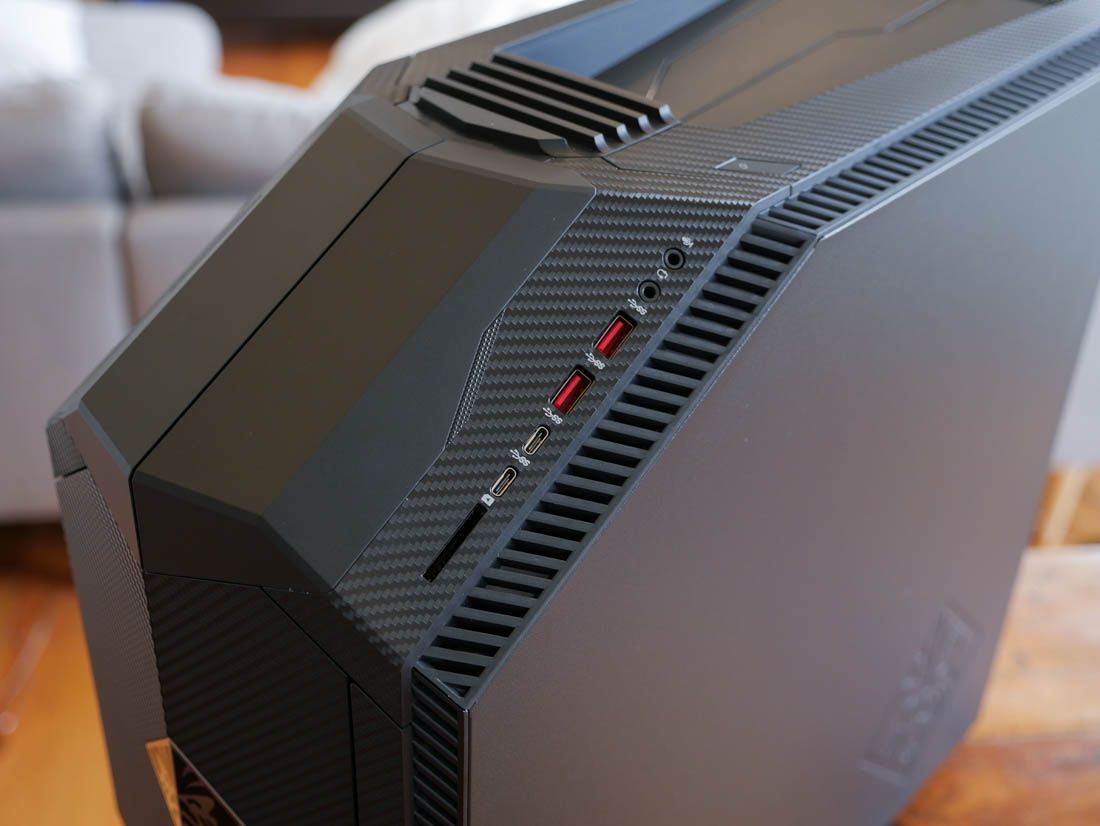
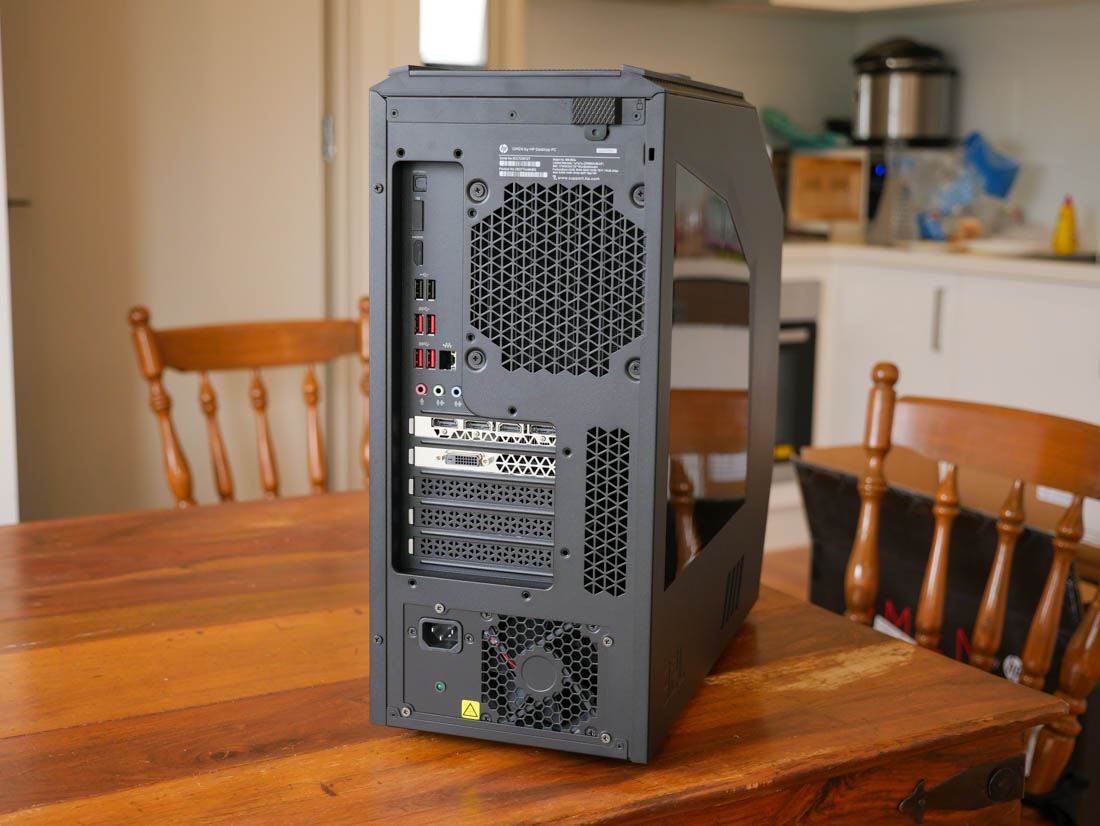

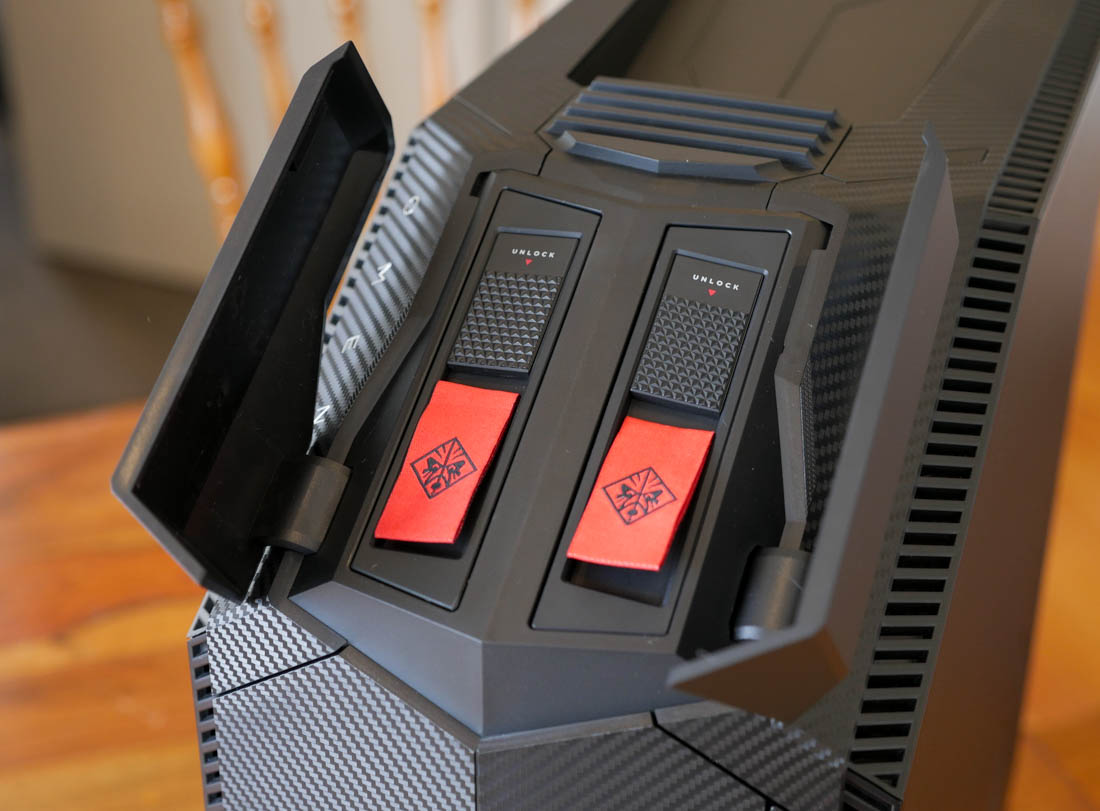
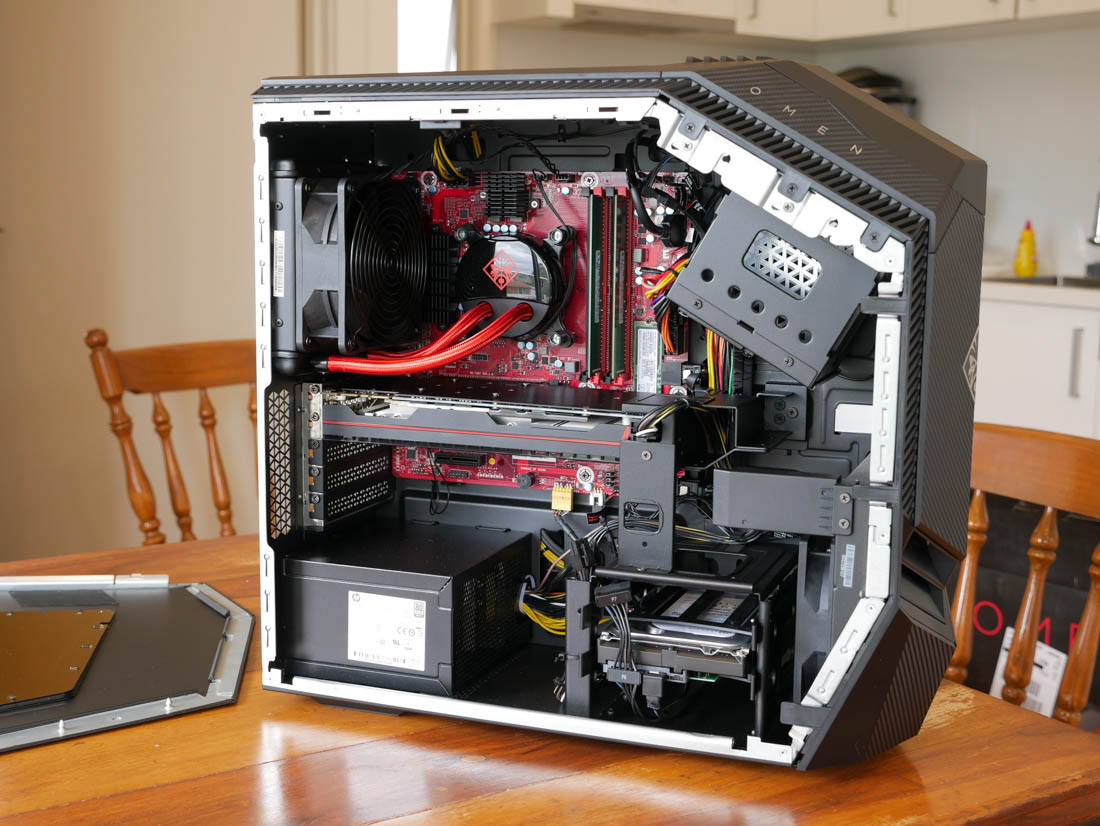
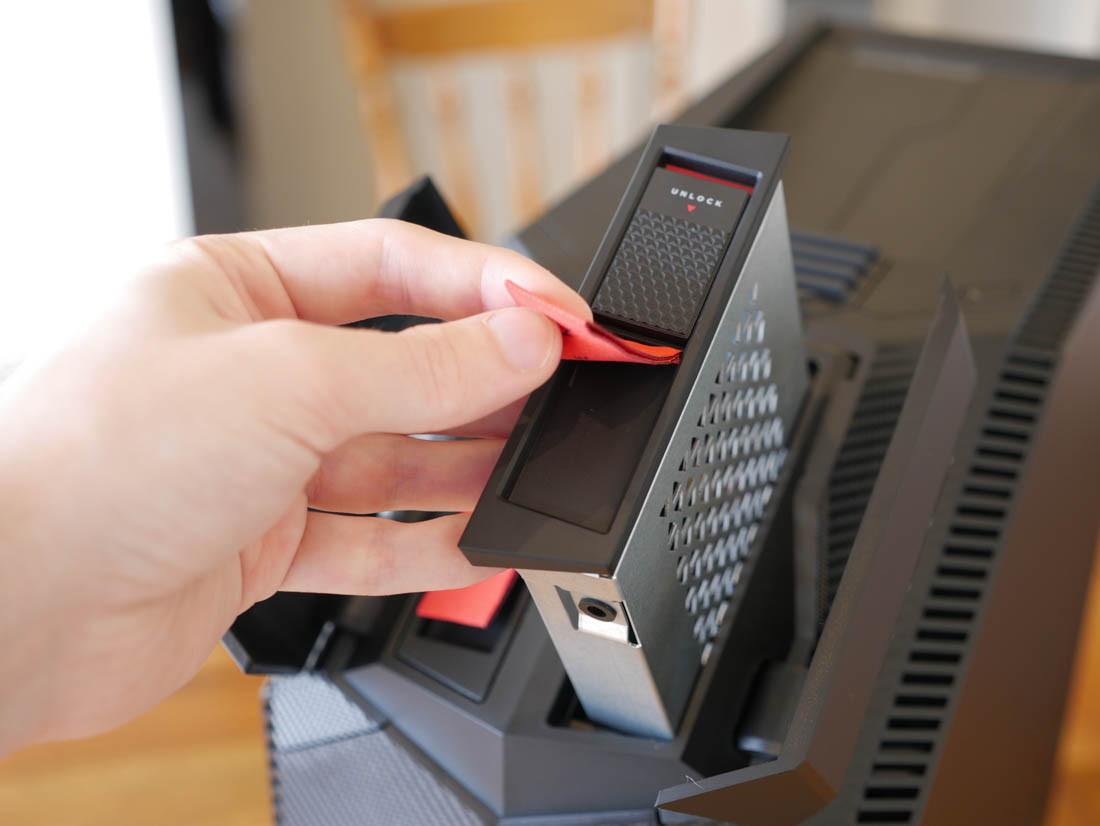
Comments
Post a Comment